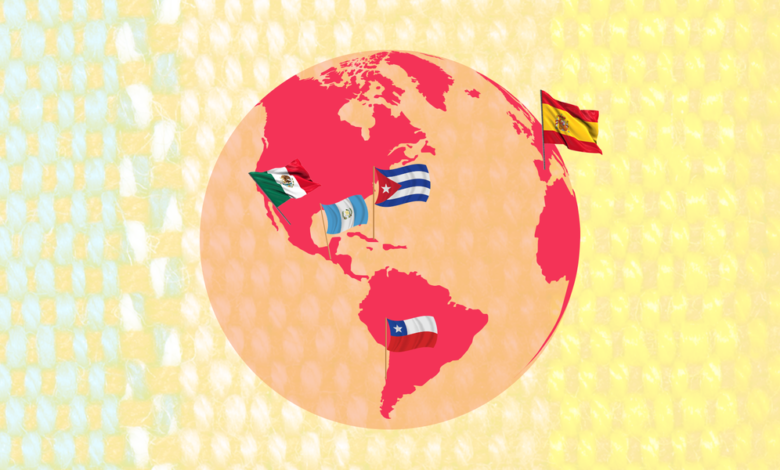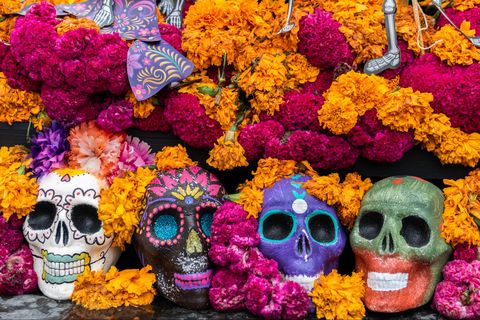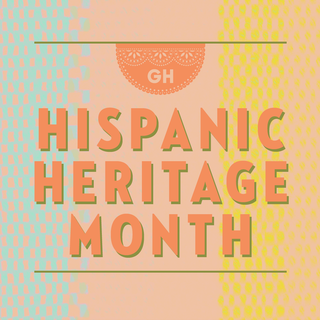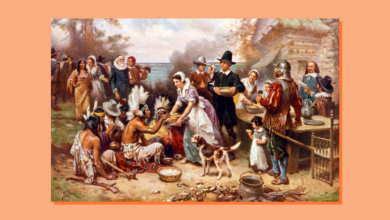What Is Hispanic Heritage Month?

[ad_1]
Across the United States, Hispanics celebrate their heritage each and every day through their cuisine, music, shows, and more. From Jennifer Lopez to Guillermo del Toro to Alexandria Ocasio-Cortez, Hispanics bring their one-of-a-kind perspective to different spaces, continuously redefining what America represents. September 15 marks the beginning of Hispanic Heritage Month, a time to applaud the accomplishments of Hispanic, Latinx and Latino-identified communities and spotlight an array of beautiful cultures and backgrounds.
What is Hispanic Heritage Month?
Hispanic Heritage Month is a time to recognize the impactful contributions and influence Hispanics have had on the United States. According to the official website, the month is meant to “[pay] tribute to the generations of Hispanic Americans who have positively influenced and enriched our nation and society.”
As of 2019, Hispanics make up the country’s largest minority group with a total population of 60.6 million. This makes up 18% of the U.S. population, with New York, California, Texas and Florida among the states with more than a million Hispanic residents.
When is Hispanic Heritage Month?
Hispanic Heritage Month is observed from September 15 to October 15 every year. The start date is historically significant because it marks the Independence Day of five Latin American countries: Costa Rica, El Salvador, Guatemala, Honduras and Nicaragua. The following day, September 16, is Mexico’s Independence Day, while Chile celebrates their independence on September 18, and Belize on September 21.
In addition, on October 12, Mexicans reclaim Columbus Day as the Día de la Raza (Race Day), which recognizes “the mixed indigenous and European heritage of Mexico.”
What is the history of Hispanic Heritage Month?
In 1968, President Lyndon B. Johnson signed the National Hispanic Heritage Week bill into law. Nearly two decades later, in 1987, Representative Esteban Torres of California submitted a bill to expand it into Hispanic Heritage Month.
“We want the public to know that we share a legacy with the rest of the country, a legacy that includes artists, writers, Olympic champions, and leaders in business, government, cinema and science,” he said.
The California representative believed that the month-long celebration would “allow our nation to properly observe and coordinate events and activities to celebrate Hispanic culture and achievement.”
Although his bill wouldn’t come to fruition, Senator Paul Simon of Illinois later submitted a similar one which successfully passed Congress. President Ronald Reagan signed it into law on August 17, 1988.
Who celebrates Hispanic Heritage Month?
Hispanic Heritage Month celebrates “the histories, cultures and contributions of American citizens whose ancestors came from Spain, Mexico, the Caribbean, and Central and South America,” per the official website. The U.S. Census elaborates that it’s observed by “Spanish-speaking nations.”
While the terms “Hispanic” and “Latino” are interchangeably used, their difference lies in the primary language spoken. Hispanic describes “a person from — or whose ancestors were from — a Spanish-speaking land or culture.” This excludes Brazil because Portuguese is the official language, but it includes Spain. Meanwhile, Latino, Latina and Latinx describe a person from Latin America, which includes Brazil, but excludes Spain.
All in all, there are more than a dozen Hispanic countries and one territory: Argentina, Bolivia, Chile, Colombia, Costa Rica, Cuba, Dominican Republic, Ecuador, El Salvador, Guatemala, Honduras, Mexico, Nicaragua, Panama, Paraguay, Peru, Puerto Rico, Spain, Uruguay and Venezuela.
However, many are calling for the celebration to be renamed Latinx Heritage Month, which would include people who speak indigenous languages as well as Brazilians who speak Portuguese.
Aside from individuals celebrating all month long, a range of government institutions also observe Hispanic Heritage Month: The Library of Congress, National Gallery of Art, Smithsonian Institution, United States Holocaust Memorial Museum, National Archives and Records Administration, National Endowment for the Humanities and the National Park Service.
More on Hispanic Heritage Month
This content is created and maintained by a third party, and imported onto this page to help users provide their email addresses. You may be able to find more information about this and similar content at piano.io
[ad_2]
Source link









